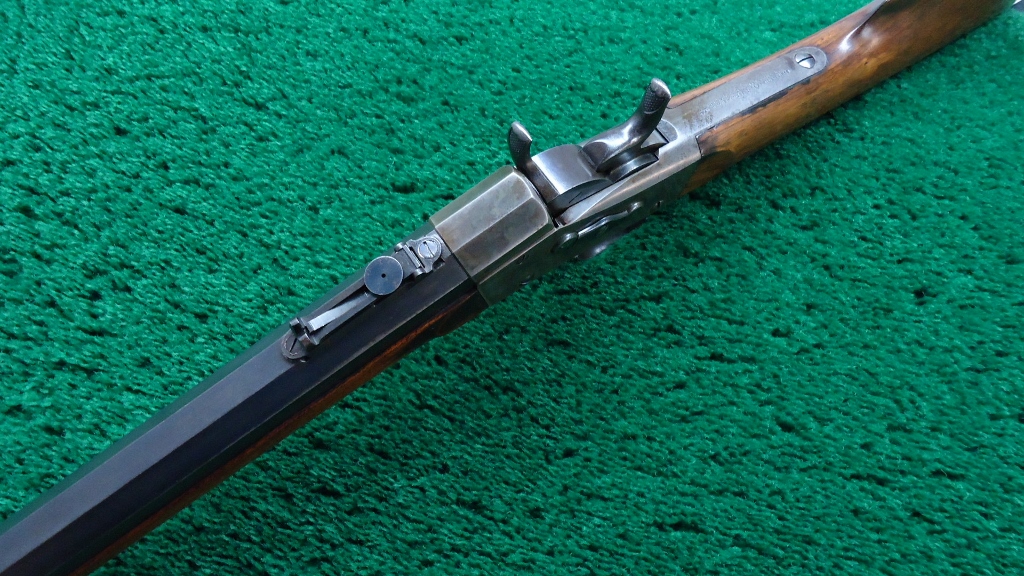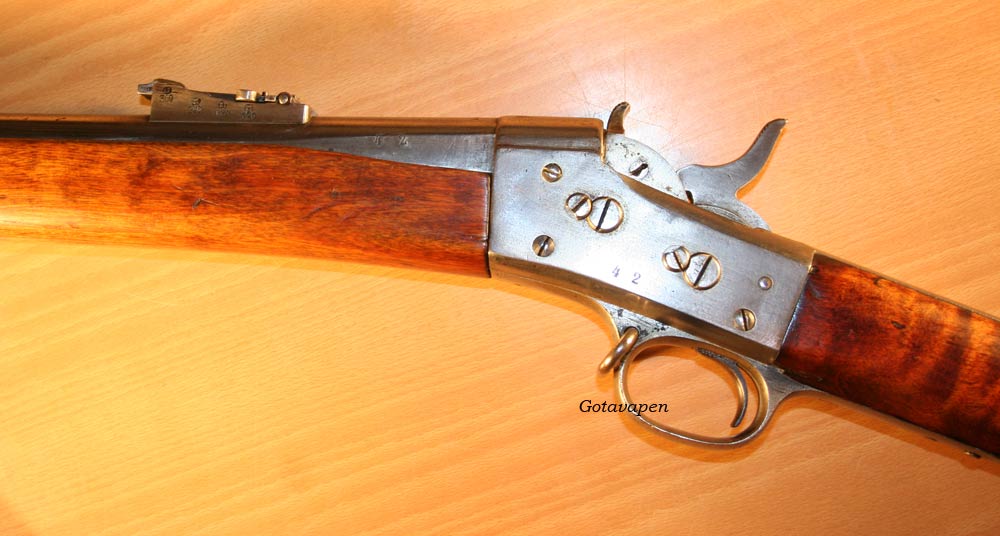

- 1873 REMINGTON ROLLING BLOCK RIFLE JACKETED BULLETS FULL
- 1873 REMINGTON ROLLING BLOCK RIFLE JACKETED BULLETS PLUS

1873 REMINGTON ROLLING BLOCK RIFLE JACKETED BULLETS PLUS
Game on! Now I had a new reloading project, bring these 100-year-old plus cases back to life. All but three of the old reloads chambered and fired just fine. So, I “borrowed” the rifle one day, brought it home and ran my test. Recently, I noticed the box in the cabinet and at the same time remembered that we had a Rolling Block rifle, in that caliber, on display in the Order Pickup Area at MidwayUSA. 080 diameter (right) - but were using approximately. When these cases were produced, over 100 years ago, U.M.C had not yet standardized the flash hole to the current approximately. They sat in the cabinet for nearly ten years, as they wouldn’t chamber in the Notice the difference in diameter of the flash holes. These cartridges pre-dated that merger, which was the reason I kept them. The Remington Arms Company and the Union Metallic Cartridge Company (U.M.C.) merged in 1912 and the cartridge headstamp became REM – UMC. This small lot of cast bullet reloads came to me from Joe Davison’s estate in New Franklin, Missouri, several years ago. The Germans developed the 7x57 cartridge for their 1893 Mauser bolt action rifle. The U.S., British and German militaries played no small part in cartridge development during this period. Near the end of the 19th century, smokeless powder, bottleneck cartridges, jacketed bullets and smaller calibers made the old cartridges and guns obsolete, but much too interesting to throw in the trash. Both cartridges were loaded with black powder and lead bullets, and I’ve enjoyed reloading and shooting a great many of them, through the years. Next came the 44/40 Winchester, introduced in the 1873 Winchester lever action rifle and the 1873 Colt single action revolver – in 1873. Old guns and ammunition have always fascinated me our first centerfire (reloadable) cartridge was the 50/70 Government, introduced in the 1866 Springfield rifle. The Model 1910 was one of the last of the Rolling Blocks. It was the brand of the brass - (U.M.C.) that was most interesting. 45-70 Mar.It all started with this loose box of reloaded 7mm Mauser (7x57) ammo – with cast bullets, and a Remington Model 1910 Rolling Block rifle. That load featured a differently shaped 405-grain bullet and was headstamped. 45-70-405 Winchester load expressly for the Marlin 1881 lever-action rifle. A typical load consists of a 300-grain bullet at 2,530 fps (770 m/s).

Reloading guides suggest maximum pressures of 60,000 psi (413 MPa). The third and highest obtainable pressures are derived from the use of the Ruger No.1 single shot rifle as well as various custom built bolt actions. Reloading guides suggest maximum pressures of 45,000 psi (310 MPa). The second level of performance comes with the use of high-pressure hand loads in post-1972 Marlin M1895 rifle. A typical factory load within this pressure consists of a 300-grain bullet driven at 1,800 fps (550 m/s) (24” barrel). Maximum pressures are usually quoted as either 28,000 CUP or 28,000 psi -similar correlation (193 MPa). Modern replicas are also included in this bracket. The “trapdoor Springfield’s and early lever actions are the weakest actions. 45-70 is generally divided into three levels of performance, each governed by the strength of rifle actions used. PEDERSOLI SHARPS 45/70 GOV 34" SINGLE SHOT RIFLE The 70 grain loads propelled a 405 grain bullet at a MV of 1,350 fps (410 m/s) and muzzle energy around 1,600 ft-lbs (2,170 Joules) and 55 grains of musket powder gave a muzzle velocity (MV) of 1,100 fps (335 m/s).

1873 REMINGTON ROLLING BLOCK RIFLE JACKETED BULLETS FULL
45-70-405) for full length (and therefore heavier) infantry rifles, the Frankford Arsenal were also loaded cartridges with reduced charges of 55 grains (3.6 g) of black powder (. 45-70-405 referring to full charges of 70 grains (4.5 g) of black powder (. While the official military designation of the new cartridge was the. The Frankford Arsenal began mass production of. 45-70 is based on a fat, rimmed, straight taper 2.105" long, and this military cartridge loaded by the Frankford Arsenal had an overall length of 2.73". 458” (11.6mm) caliber405 grain weight projectile over 70 grains of black powder for a muzzle velocity of roughly 1,200 fps (365 m/s). 45-70 Government Single Shot RiflesĪnyway, the Army chose the.


 0 kommentar(er)
0 kommentar(er)
